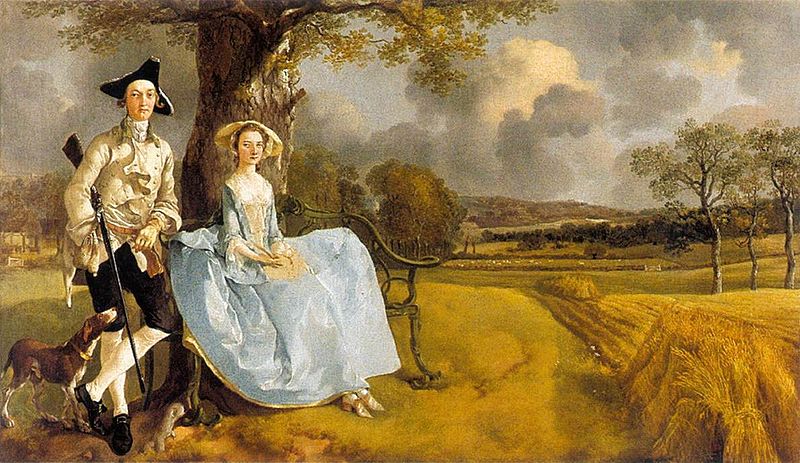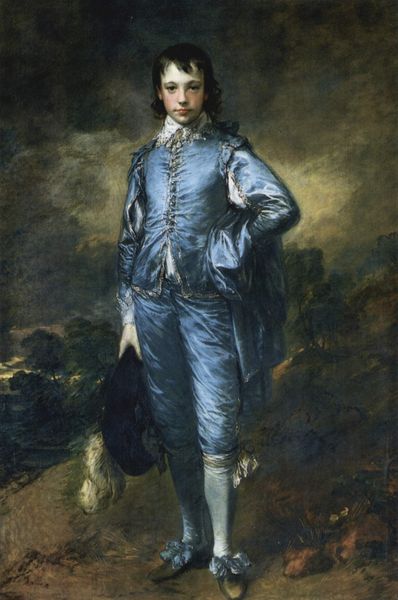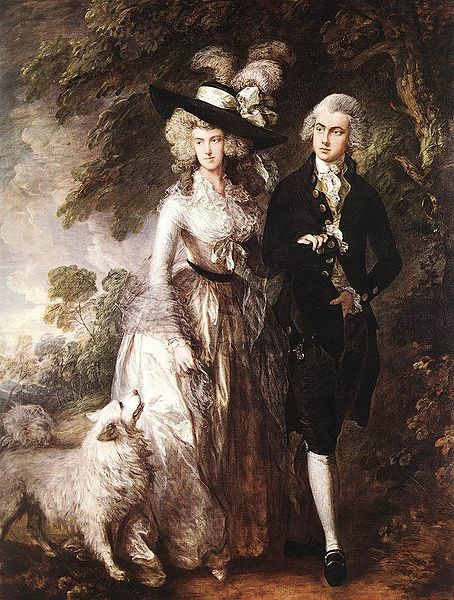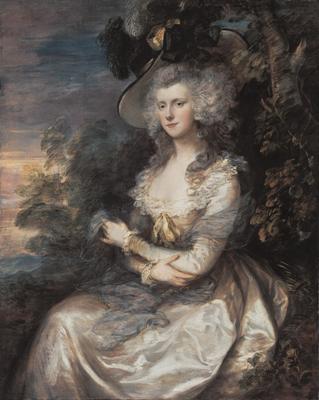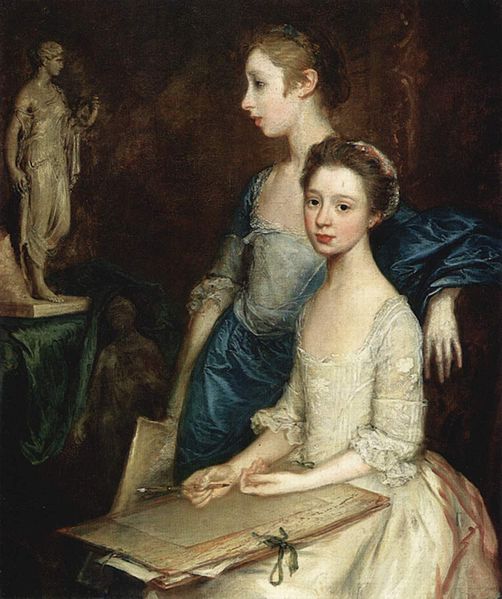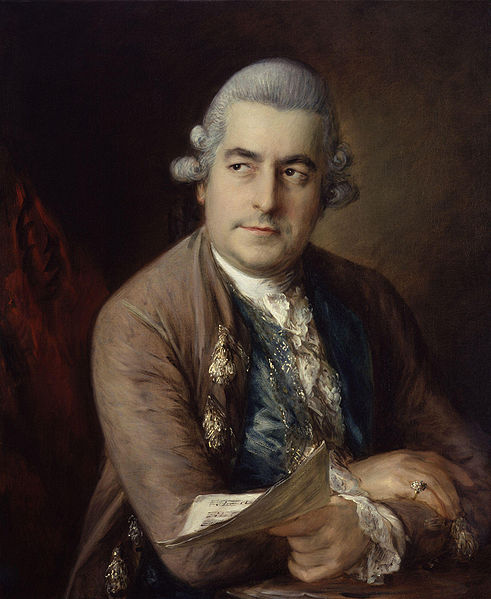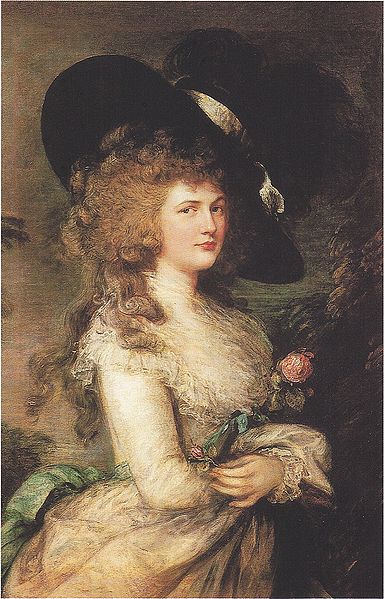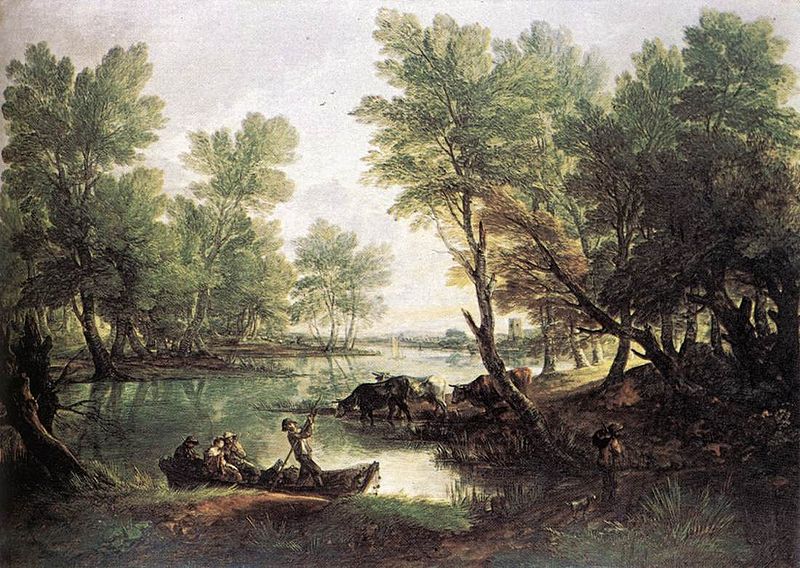<Back to Index>
- Physicist Daniel Gabriel Fahrenheit, 1686
- Painter Thomas Gainsborough, 1727
- Dictator of Pakistan Muhammad Ayub Khan, 1907
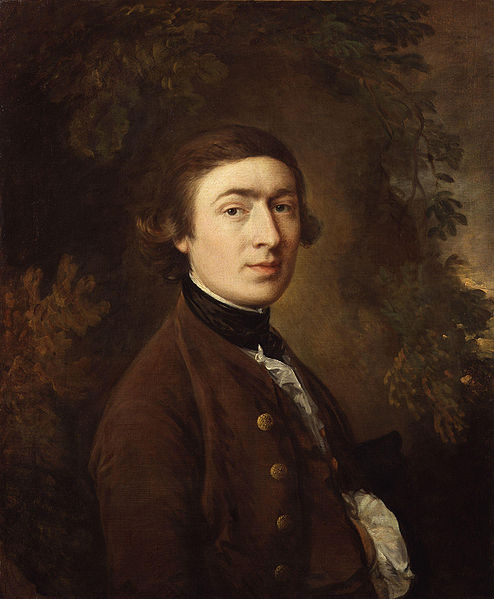
Thomas Gainsborough (christened 14 May 1727 – died 2 August 1788) was one of the most famous portrait and landscape painters of 18th century Britain.
Thomas Gainsborough was born in Sudbury, Suffolk, England. His father was a weaver involved with the wool trade. At the age of thirteen he impressed his father with his penciling skills so that he let him go to London to study art in 1740. In London he first trained under engraver Hubert Gravelot but eventually became associated with William Hogarth and his school. One of his mentors was Francis Hayman. In those years he contributed to the decoration of what is now the Thomas Coram Foundation for Children and the supper boxes at Vauxhall Gardens.
In the 1740s, Gainsborough married Margaret Burr, an illegitimate daughter of the Duke of Beaufort, who settled a £200 annuity on the couple. The artist's work, then mainly composed of landscape paintings, was not selling very well. He returned to Sudbury in 1748–1749 and concentrated on the painting of portraits.
In 1752, he and his family, now including two daughters, moved to Ipswich.
Commissions for personal portraits increased, but his clientele
included mainly local merchants and squires. He had to borrow against
his wife's annuity. In 1759, Gainsborough and his family moved to Bath. There, he studied portraits by van Dyck and
was eventually able to attract a better-paying high society clientele.
In 1761, he began to send work to the Society of Arts exhibition in
London (now the Royal Society of Arts, of which he was one of the earliest members); and from 1769 on, he submitted works to the Royal Academy's
annual exhibitions. He selected portraits of well-known or notorious
clients in order to attract attention. These exhibitions helped him
acquire a national reputation, and he was invited to become one of the
founding members of the Royal Academy in 1769. His relationship with
the academy, however, was not an easy one and he stopped exhibiting his
paintings there in 1773. In 1774, Gainsborough and his family moved to London to live in Schomberg House, Pall Mall.
In 1777, he again began to exhibit his paintings at the Royal Academy,
including portraits of contemporary celebrities, such as the Duke and
Duchess of Cumberland. Exhibitions of his work continued for the next
six years. In 1780, he painted the portraits of King George III and
his queen and afterwards received many royal commissions. This gave him
some influence with the Academy and allowed him to dictate the manner
in which he wished his work to be exhibited. However, in 1783, he
removed his paintings from the forthcoming exhibition and transferred
them to Schomberg House. In 1784, royal painter Allan Ramsay died and the King was obliged to give the job to Gainsborough's rival and Academy president, Joshua Reynolds.
Gainsborough remained the Royal Family's favorite painter, however. At
his own express wish, he was buried at St. Anne's Church, Kew, where the Family regularly worshipped. In his later years, Gainsborough often painted relatively simple, ordinary landscapes. With Richard Wilson,
he was one of the originators of the eighteenth-century British
landscape school; though simultaneously, in conjunction with Joshua
Reynolds, he was the dominant British portraitist of the second half of the 18th century. He died of cancer on
2 August 1788 at the age of 61 and is interred at Kew Parish Church,
Surrey (located in Kew Gardens). He is buried next to Francis Bauer,
the famous botanical illustrator. Gainsborough
was noted for the speed with which he applied his paint, and he worked more
from his observations of nature (and of human nature) than from any
application of formal academic rules. His most famous works, such as Portrait of Mrs. Graham; Mary and Margaret: The Painter's Daughters; William Hallett and His Wife Elizabeth, nee Stephen, known as The Morning Walk; and Cottage Girl with Dog and Pitcher, display the unique individuality of his subjects. Gainsborough's only known assistant was his nephew, Gainsborough Dupont. In the last year of his life he collaborated with John Hoppner in painting a full length portrait of Charlotte, Countess Talbot.
